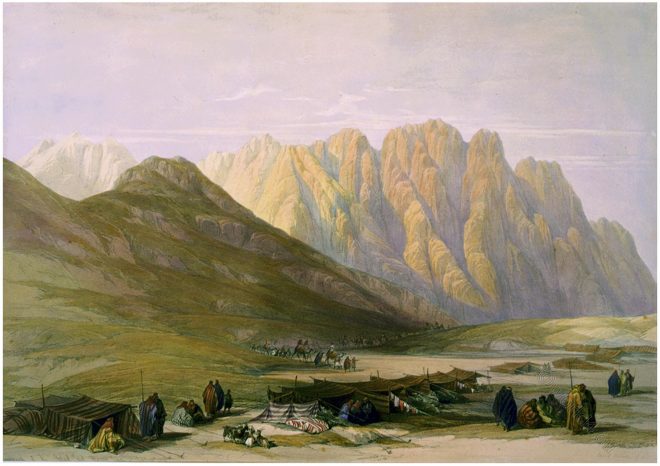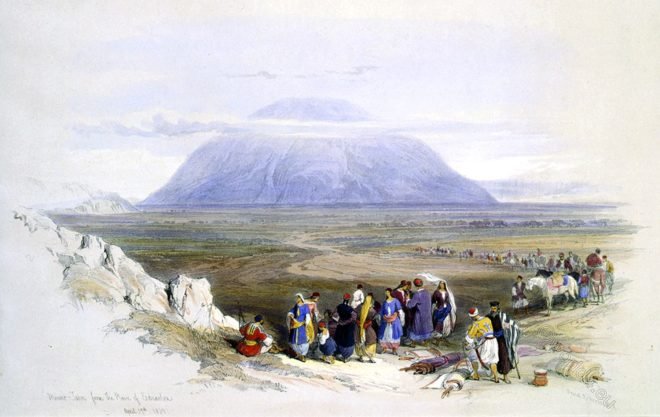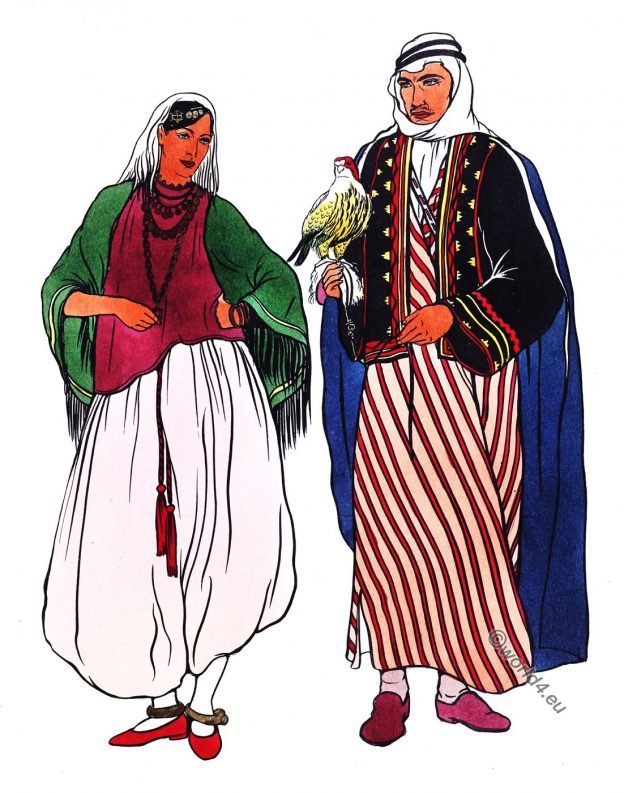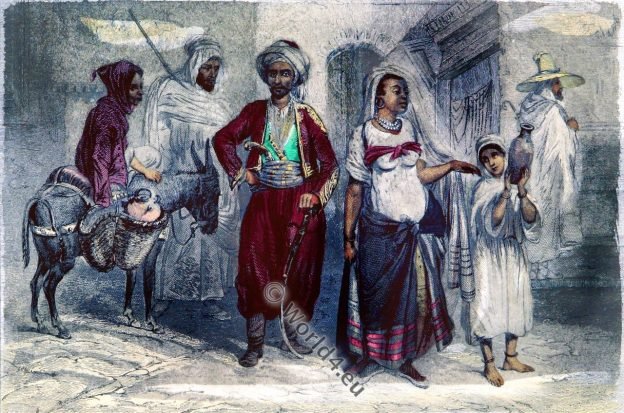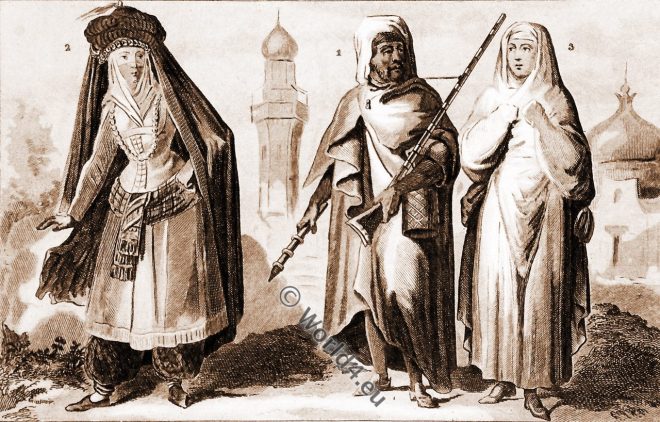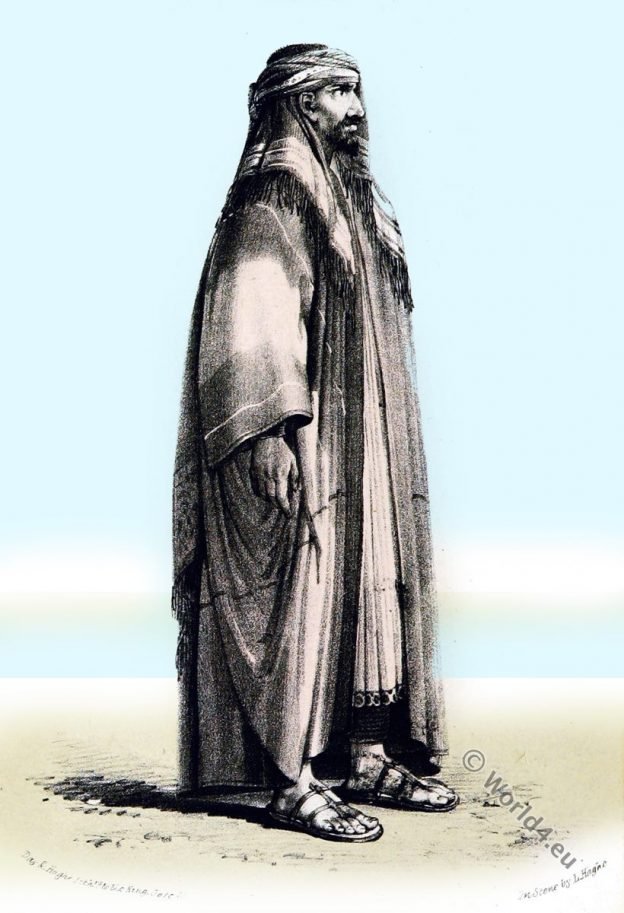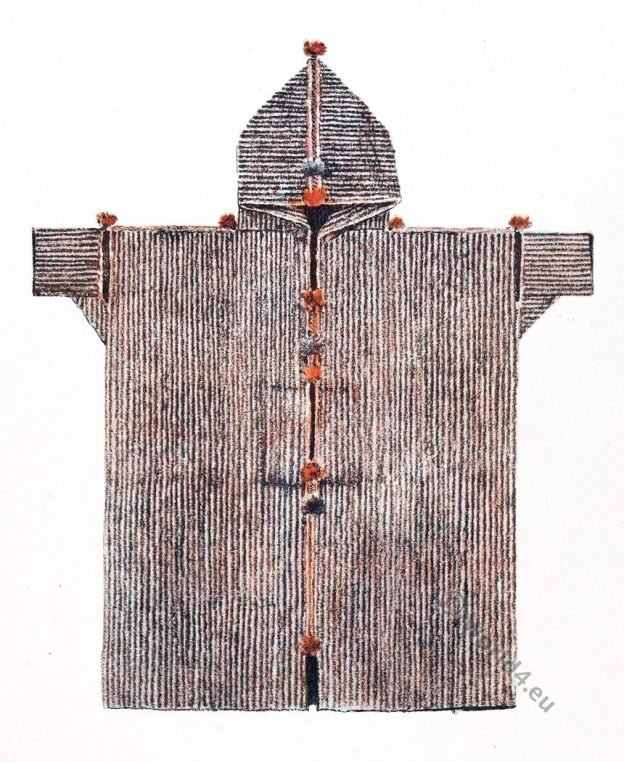This scene represents the arrival of the caravan of the Artist and his companions, in the country, and at the tents of the Aulad-Sa’id.
Tag: Arabian customs
Traditional Arabian dress and customs in the Middle East.
People visiting the Fountain of Cana at Galilee, Israel.
People visiting the Fountain of Cana. Cana of Galilee, Israel: an ancient water fountain in use.
Mount Tabor, the mountain of the world in Galilee in northern Israel.
Tabor is a beautiful mountain, wholly of limestone, and rising about a thousand feet above the great Plain of Esdraelon.
The dress of the Arabs. Affluent class. Pictorial work.
The name Arab originally was reserved for the nomad tribes east of Palestine and in the Syro-Arabian desert, but today it is generally used for most of the surviving Semitic peoples who, in addition to living in Arabia, are to be found in Mesopotamia, North Africa, the western shores of the Red Sea, and the eastern shores of the Persian Gulf.
Women from Aden, Jemen 1885.
Native women from Aden in traditional dress, 1885.
Historical Berber costumes from Morocco, 1862.
Historical Berber Costumes of Morocco. Morocco is a state in the north-west of Africa.
Arabian inhabitants of Mecca and Medina, 19th century
Arabian inhabitants of Mecca and Medina in traditional clothing of the 19th century. Vêtements traditionnels. Arabe de Médine, femme de la Mecque et femme de Médine
King of Saudi Arabia. Sheikh Abdallah I. Ibn Saud.
Sheikh Abdallah I. ibn Saud (1740-1818) from the House of Saud, ruled the First Saudi State and was Imam of the Wahhabi
Oriental Costumes. Farasia. Kaftan. North Africa, Morocco.
The Farasia, Kaftan. This garment is a shirt-dress with wide sleeves, it is buttoned over the chest.
Djellaba. North Africa, Marocco.
This hooded garment serves as an outer dress and replaces the burnoose or sulham.

